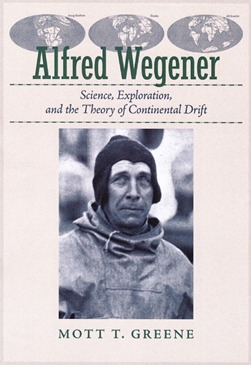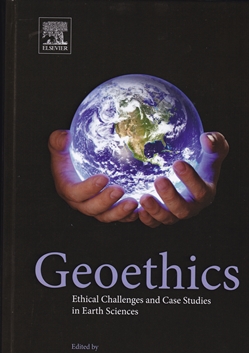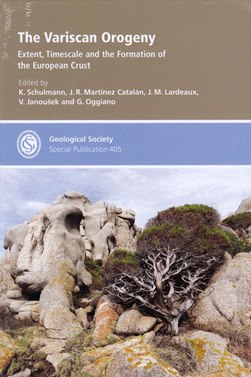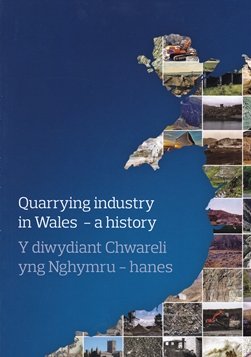 Alfred Wegener
Alfred Wegener
There is a moment in The Empire Strikes Back (1980) that neatly encapsulates two contrasting scientific character types. Captain Piett reports a lead from one of many drones sent out to find a rebel hideout. Admiral Ozzel dismisses his claim with statistical objections, but Darth Vader takes one quick look and says: ‘That’s it – the rebels are there’. Such intuitive certainty characterised Alfred Wegener, subject of this brilliant and much-anticipated biography. Wegener saw what others missed, knew he was right - and mostly was. The Force was strong with him.
Wegener was born in Berlin, youngest of five, to Anna Schwarz (1847 - 1919) and Richard Wegener (1843 - 1917), clergyman, intellectual, poet, classicist and director of a school for orphans of worthy professionals. Hard work and outdoorsy asceticism marked his upbringing. Sharing his lifelong need for physical exertion with older brother and fellow explorer Kurt (1878 - 1964), Alfred developed a love of ballooning that led to their joint 1906 world continuous flight record (52.5 hours).
The tenor of his life thus set, throughout Alfred’s three gruelling Greenland expeditions (graphically recounted here) his dogged pursuit of scientific data verged on superhuman. But the model for the theoretical work on which his legacy chiefly rests was set in 1909 when, in a paper on atmospheric layering, he advanced a theory based on data published by others - making connections overlooked by the original authors that led to more elegant conclusions.
This was exactly what happened in 1911, when Wegener made his wild surmise on first looking into Karl Andree’s Allgemeine Hand-atlas in the office of his colleague Emil Take (1879 - 1925). Wegener was not the first to notice the congruence of Atlantic coastlines, but it led to the first publication of his drift hypothesis in 1912, and more fully in 1915.
Others have covered different aspects of the enigmatic Wegener’s legacy. Henry Frankel has written a comprehensive history of the continental drift controversy; Naomi Oreskes has expertly explored and explained the theory’s particular difficulties in the United States. What we have lacked, until now, was a full picture of the man. Now we have it, set masterfully within the wider narrative of historical development in all the subjects upon which Wegener exerted influence (or failed to).
Following the advice of L Pearce Williams, Faraday’s biographer, Greene has ‘read everything his subject wrote, everything he read, and as much as possible of what the people he read, read’. He has also been everywhere that Wegener went, including Greenland. That labour has taken over 20 years. The result is a magnificent, definitive and indefatigable tribute to an indefatigable man.
Reviewed by Ted Nield
ALFRED WEGENER – SCIENCE, EXPLORATION AND THE THEORY OF CONTINENTAL DRIFT by Mott T Greene. Johns Hopkins University Press October 2015 720pp ISBN 9781421417127 £29.99 hbk
Geoethics - Ethical Challenges and Case Studies in Earth Sciences
 This is a book suitable for Earth scientists with an interest in sustainable development and social responsibility. It discusses the ethical issues in the Earth sciences. It includes case studies, showing where experts have gone wrong and where key organisations have ignored facts, wanting assessments favourable to their agendas. It is written by a group of contributors with experience ranging from philosophy to Earth science.
This is a book suitable for Earth scientists with an interest in sustainable development and social responsibility. It discusses the ethical issues in the Earth sciences. It includes case studies, showing where experts have gone wrong and where key organisations have ignored facts, wanting assessments favourable to their agendas. It is written by a group of contributors with experience ranging from philosophy to Earth science.
Competition for natural resources increases all the time. Modern societies are increasingly under pressure from shortages in energy carriers, land surface, water, metals, biodiversity etc. Geoethics consists of three main areas: (1) professional ethics of scientists; (2) ethical considerations related to specific projects, and (3) general ethical considerations about the Earth and its components.
Recent developments in the formulation of Research integrity policy are outlined, ending with the ‘Singapore Statement’. The four principles and 14 responsibilities of researchers and their institutions are given. One particular problem is plagiarism, which is an offence against decency; not always an illegal action, it is always an ethical problem.
The book refers to the 1980s discussions between the Reagan administration and the Soviets. Reports to the US Congress from the executive branch of government had stated that the Soviet Union was ‘in likely violation’ of the bilateral Threshold Test Ban Treaty (TTBT) 1974, which imposed a limit of 150 kilotons for the explosive yield of any underground nuclear weapons test conducted by these two countries after March 1976.
Nuclear power plants are a potential risk to the population, when they are located near faults liable to earthquakes and along coasts prone to tsunamis. To maximise profits, estimates of seismic hazard may be minimised, so as to reduce construction costs.
Decision-making under conditions of uncertainty poses serious questions about the decision pathway, its complexities, consequent responsibilities, and, ultimately, the difficulties of identifying the ‘correct’ decision to make. Analysis of radioactive waste management and the ethical discussion surrounding this topic shows that reflection on side-effects of human actions is, in most cases, neither as clear as should be possible, nor as necessary.
Although geoethics is an important new branch of Earth science, it should be noted that geohazards have been faced since the dawn of civilisation. This is an excellent and thought-provoking textbook and can be recommended most strongly.
Reviewed by Steve Rowlatt
GEOETHICS - ETHICAL CHALLENGES AND CASE STUDIES IN EARTH SCIENCES Edited by Max Wyss and Silvia Peppoloni Publisher: Elsevier Science Publishing Co Inc Publication Date: 21 Nov. 2014 425pp hbk ISBN 978-0-12-799935-7 List Price £54.89 www.elsevier.com
The Variscan Orogeny
 This Geological Society Special Publication presents 14 papers summarising the state of the art in our present understanding of the Variscan Orogeny. In so doing the editors and authors of the volume have had to cover both the northern orogeny, which was characterised by Late-Devonian-Carboniferous rifting, subduction and collision, and the southern orogeny, which was affected by late Carboniferous collision and Permian wrenching. The papers are an excellent mix, helping us develop our understanding and showing how there was a major switch in plate configurations at the Early-Late Carboniferous boundary.
This Geological Society Special Publication presents 14 papers summarising the state of the art in our present understanding of the Variscan Orogeny. In so doing the editors and authors of the volume have had to cover both the northern orogeny, which was characterised by Late-Devonian-Carboniferous rifting, subduction and collision, and the southern orogeny, which was affected by late Carboniferous collision and Permian wrenching. The papers are an excellent mix, helping us develop our understanding and showing how there was a major switch in plate configurations at the Early-Late Carboniferous boundary.
The papers have been arranged to reflect the evolution of the Variscan system in both space and time. In so doing they provide the readership with an insight into not only the similarities, but also the differences between the different orogenic events. These have highlighted the individual tectonic, metamorphic and magmatic events across the European Variscides.
The volume is a valuable addition to the subject as it seeks to explain both major Variscan realms. In the introduction to the volume, the editors state that they hope the volume will contribute to ‘...the reconciliation of classical European geological wisdom with the plate tectonic paradigm’. This has been achieved, with several new models being presented.
There still remains much to be done on the Variscan Orogeny, but this volume is a superb addition to the subject. I am confident that it will generate further interest and that some of the ‘open questions’ presented in the conclusions of several of the papers will be suitable goals for future research in the subject.
The quality of the binding is as one has come to expect from the Geological Society, with the papers clearly set out in the double-column format typical of the publisher. There are a number of graphs, maps, sections and charts included with the papers and these have been produced very clearly. It is good to see that the publisher has reproduced many of these in colour as it does help with their interpretation.
The book makes an invaluable contribution to this area of study. With the mixture of papers presented it allows a comparison of several different models and gives a suitable starting point for wider in-depth studies.
I would recommend this book to anyone in the Earth sciences studying in this particular field. I think it should be made available to undergraduates studying the complexities of the development of the European crust and should definitely be found on the bookshelves of all university geoscience departments. The papers herein presented archive our knowledge and opinions on a complex subject at a specific point in time.
Reviewed by Gordon Neighbour
THE VARISCAN OROGENY - EXTENT, TIMESCALE AND THE FORMATION OF THE EUROPEAN CRUST. Edited by: K Schulmann, J R Martinez Catalán, J M Lardeaux, V Janoušek and G Oggiano ISBN: 978–1–86239–658-6 Geological Society Special Publication 405 RRP: £120.00 Fellows price: £60.00 W: www.geolsoc.org.uk/bookshop
Quarrying industry in Wales - a history
 The first impression is of a weighty, colourful A4 publication but the greatest pleasure, in addition to the low price of just shy of £20, is the content. Despite the title (“a history”) this is a series of vignettes concerning quarries and their geological setting across the country. Fascinating stuff, and easy to dip into as the mood takes the reader.
The first impression is of a weighty, colourful A4 publication but the greatest pleasure, in addition to the low price of just shy of £20, is the content. Despite the title (“a history”) this is a series of vignettes concerning quarries and their geological setting across the country. Fascinating stuff, and easy to dip into as the mood takes the reader.
The scene is set with a concise overview of the history of stone usage and extraction in Wales, taking the reader through to the planning and economic constraints faced by modern industry.
Arranged by general geographical area from north to south, the reader is taken on a journey through the quarrying industry with the principal focus on the last two centuries. The small geological maps introducing each chapter add a touch of colour as well as providing location markers; but it took me a while to realise that there was also a fold-out key, printed on the cover, enabling me to interpret the various colours as well as act as a page-marker!
The author has so much to share and has cleverly incorporated many extra insights using box inserts, for example ‘Limestone: the world’s most useful rock’ which reveals the huge number of products for which this stone is used. Others range from types of buildings (e.g. the medieval Stanley churches), through people and organisations (e.g. the Institute of Quarrying), to a number of beautiful mineral specimens that have been discovered (e.g. azurite and xanthoconite, a rare silver/arsenic/sulphur mineral, from Dolyhir). Appropriate for the intended general readership, references are to background reading rather than rigorous listings of all relevant publications.
Mining is not addressed. There is only passing mention of underground workings for lime, slate and sand, plus one large photograph: of the Dinas Silica Mine, producer of furnace bricks. The book ends with appendices pointing readers to sources of additional information, from the Welsh Stone Forum, through ideas for educational course development, to explanations of acronyms and a glossary.
The author is planning a similar volume on Quarrying in Derbyshire and the Peak District, and we can but hope that he will go on to write companion volumes on the quarrying industries elsewhere in England, Scotland and Ireland!
Reviewed by Mike Rosenbaum
QUARRYING INDUSTRY IN WALES: A HISTORY / Y diwydiant Chwareli yng Nghymru - hanes, by Ian A Thomas, 2015. Published by: National Stone Centre 224 pp (pbk) ISBN: 978 1 871 82738 5 List price: £19.95.